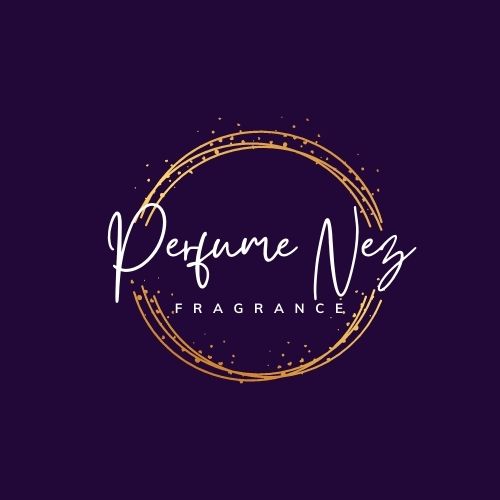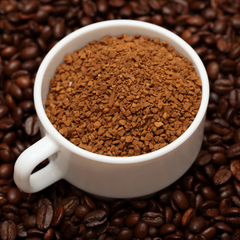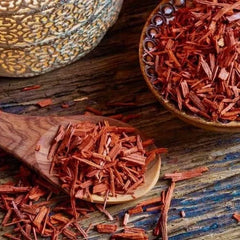What Does Ylang Ylang Smell Like in Perfume?
Click For Affordable Inspired Perfume Alternatives
Ylang-ylang is one of the most luxurious and exotic floral notes in perfumery. Derived from the flowers of the Cananga tree, this fragrant oil has been used in traditional rituals, aromatherapy, and high-end perfumes for centuries.
In this article, we will explore what ylang-ylang smells like in perfume, its scent characteristics, fragrance pairings, and some of the best perfumes that feature this beautiful floral note.
The Scent Profile of Ylang Ylang
Ylang-ylang has a rich, deep, and multi-faceted aroma that evolves over time. It is often described as a combination of floral, fruity, and creamy tones, making it a versatile ingredient in perfumery.
Main Characteristics of Ylang Ylang in Perfume
-
Floral and Exotic – A heady, narcotic floral scent that is both deep and intoxicating.
-
Sweet and Fruity – Has hints of ripe banana, custard, and jasmine-like sweetness.
-
Creamy and Velvety – A smooth, buttery texture that blends well with other florals.
-
Spicy and Slightly Medicinal – A subtle warmth, similar to cloves or nutmeg, giving it depth.
-
Sensual and Sultry – A seductive quality, often associated with aphrodisiac effects.
Depending on its distillation stage, ylang-ylang oil has different grades, which affect its scent intensity.
The Different Grades of Ylang Ylang in Perfumery
Ylang-ylang is distilled in four main fractions, with each stage producing a different scent profile:
1. Ylang Ylang Extra
-
The first and most potent distillation.
-
Has an intense floral, heady, and almost spicy scent.
-
Used in high-end perfumes for a strong floral impact.
2. Ylang Ylang I
-
Slightly less intense than the Extra grade.
-
Retains the deep, rich floral aroma but is smoother.
3. Ylang Ylang II
-
A more balanced, slightly fresher version.
-
Works well in both floral and fruity perfumes.
4. Ylang Ylang III
-
The softest and most subdued version.
-
Often used in base notes for a creamy floral effect.
How Ylang Ylang is Used in Perfume
Ylang-ylang is a dominant floral note in many perfumes but can also act as a supporting ingredient to enhance other scents. It pairs well with a wide variety of fragrance families.
1. Ylang Ylang in Floral Perfumes
-
Blends beautifully with jasmine, tuberose, and rose.
-
Creates romantic and luxurious floral compositions.
-
Example: Dior J’Adore – A radiant floral bouquet with ylang-ylang at its heart.
2. Ylang Ylang in Oriental Perfumes
-
Enhances warm, spicy, and exotic accords.
-
Works well with amber, vanilla, and sandalwood.
-
Example: Guerlain Samsara – A creamy floral-oriental perfume featuring ylang-ylang and sandalwood.
3. Ylang Ylang in Fruity Perfumes
-
Adds a tropical, banana-like sweetness.
-
Pairs well with coconut, mango, and citrus.
-
Example: Tom Ford Soleil Blanc – A beachy scent with ylang-ylang and coconut.
4. Ylang Ylang in Woody Perfumes
-
Softens dry, earthy woods with its creamy floralcy.
-
Works well with patchouli, vetiver, and cedarwood.
-
Example: Chanel Coco – A warm, spicy-woody floral with ylang-ylang.
5. Ylang Ylang in Green and Fresh Perfumes
-
Adds a soft floral touch to fresh compositions.
-
Works well with bergamot, neroli, and galbanum.
-
Example: Chanel No. 5 – A classic floral aldehyde with ylang-ylang and citrus.
Perfumes Featuring Ylang Ylang
1. Chanel No. 5 (1921)
A legendary floral aldehyde with a rich ylang-ylang, jasmine, and sandalwood heart.
2. Dior J’Adore (1999)
A radiant white floral perfume featuring ylang-ylang, jasmine, and pear.
3. Guerlain Samsara (1989)
A sensual ylang-ylang and sandalwood fragrance with warm oriental notes.
4. Tom Ford Soleil Blanc (2016)
A tropical-inspired perfume with ylang-ylang, coconut, and bergamot.
5. Chanel Coco (1984)
A sophisticated blend of ylang-ylang, spices, and woody notes.
6. Estée Lauder Bronze Goddess (2008)
A summer-inspired scent featuring ylang-ylang, coconut, and vanilla.
7. Yves Saint Laurent Opium (1977)
A bold, spicy floral with ylang-ylang, myrrh, and amber.
8. Frédéric Malle Une Fleur de Cassie (2000)
A unique and artistic floral with ylang-ylang, mimosa, and aldehydes.
Ylang Ylang vs. Other Floral Notes in Perfumery
Ylang-ylang is often compared to other florals, but it has a unique depth and exotic richness that sets it apart.
-
Ylang Ylang vs. Jasmine – Jasmine is sweeter and more indolic, while ylang-ylang is creamier and slightly spicier.
-
Ylang Ylang vs. Tuberose – Tuberose is stronger and more narcotic, while ylang-ylang is fruitier and softer.
-
Ylang Ylang vs. Gardenia – Gardenia has a green, dewy freshness, while ylang-ylang is warmer and richer.
-
Ylang Ylang vs. Neroli – Neroli is citrusy and bright, while ylang-ylang is sultry and floral-fruity.
Why People Love (or Dislike) Ylang Ylang in Perfume
Reasons People Love Ylang Ylang
✔ Exotic and luxurious – A unique floral note that feels sophisticated.
✔ Sensual and romantic – Often used in aphrodisiac perfumes.
✔ Versatile – Works in both light, fresh perfumes and deep, oriental scents.
Reasons Some Dislike Ylang Ylang
✖ Can be too strong or heady for those sensitive to florals.
✖ The banana-like sweetness may feel unusual to some.
✖ Some versions have a slightly medicinal or clove-like aspect.
In Conclusion
Ylang-ylang is a versatile, rich, and deeply floral note that plays a vital role in perfumery. Its creamy, fruity, and slightly spicy characteristics make it perfect for a variety of fragrance styles, from fresh and tropical to warm and seductive.
Whether blended with jasmine, vanilla, sandalwood, or citrus, ylang-ylang adds a unique luxurious depth to any perfume. For those who love intoxicating, tropical florals, this exotic note is a must-explore in the world of perfumery.
Buy Perfumes - Best Online Retailers
Click For Affordable Inspired Perfume Alternatives
Click For The Best Niche Perfumes & Decants
Pheromone Perfumes - Confidence, Attraction & Appeal - Click For More
Home Fragrances & Candle Warmers - Click To Scent Up Your Spaces Today!



